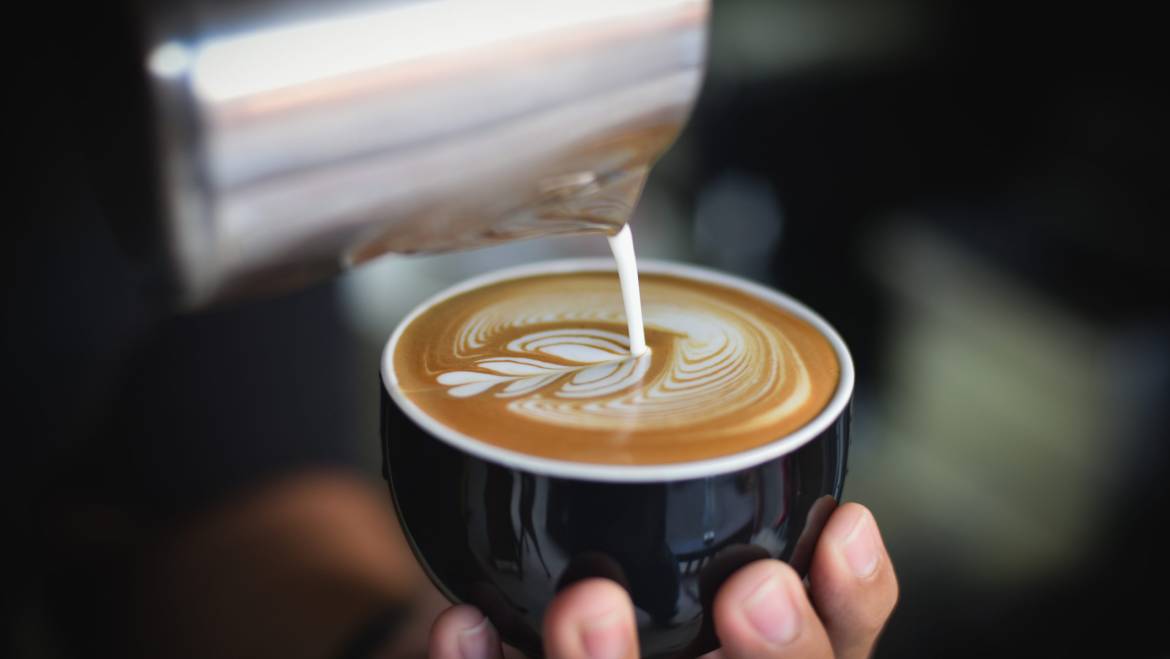Getting to the Bottom of What Makes a Flat White So Special
The Flat White, with its velvety texture and powerful coffee flavour, has quickly become a favourite among coffee aficionados due to its unique combination of these two qualities. This beverage was born out of the coffee culture of the Antipodes and has since achieved a respected reputation among espresso-based beverages all over the world. The ideal Flat White is the product of a skilled blending of espresso that has been carefully extracted and milk that has been steamed to a smooth texture. This results in a harmonic balance between richness and creaminess.
Composition of a Flat White, as well as Identifying Traits of the Drink
A double shot of espresso and microfoamed milk are the two primary components that make up a Flat White. Microfoamed milk is the third component. The espresso provides a sturdy base, as well as depth and complexity, while the microfoam, which is milk that has been heated until it reaches a glossy, delicate consistency, provides a smooth finish that caresses the palate. Because the ratio of coffee to milk in a Flat White is larger than in other milk-based coffees, the subtleties of the espresso are not obscured as much as they would be in other types of coffees.
The Espresso Foundation: Pursuing Perfection via Extraction
The espresso is the starting point on the path to creating the ideal Flat White. It is necessary to extract a double shot of espresso from freshly ground coffee beans in order to have a dense crema and a flavour profile that is full-bodied. The length of time spent extracting the coffee, which is normally between 25 and 30 seconds, plays an essential role in producing the ideal harmony of sweet, acidic, and bitter flavours.
Ideal Espresso Settings Are As Follows:
Fineness of the grind
Dosage: between 18 and 20 grammes
Time required for extraction: 25-30 seconds
Temperature: 90-96 degrees Celsius
The Transformation of Milk Through the Mastery of Microfoam
Microfoamed milk is the distinguishing feature of the Flat White. The desired result is a cappuccino-like drink with a silky smooth texture but without the dense foam that is typical of a cappuccino. The milk is heated in order to absorb air and produce small bubbles, which ultimately results in a glossy finish that blends in perfectly with the espresso.
How to Achieve the Ideal Microfoam:
- Employ milk that is recent and cool.
- To make a vortex in the milk, position the steam wand so that it is slightly below the surface.
- While the milk is being heated in the steam to a temperature between 60 and 68 degrees Celsius, the whirlpool should be maintained.
- Tap the milk pitcher on the counter gently and swirl it to get rid of any huge bubbles.
Espresso and milk are brought together in this lesson on the art of assembly.
The creation of a Flat White involves much more than simple blending; rather, it is the nuanced skill of blending espresso with milk. After the double shot of espresso has been put into the cup, the microfoam milk is poured in from a low height to ensure that it slides beneath the crema, providing a beverage with a colour and texture that is consistent throughout.
A Walkthrough of the Pouring Method:
- Start by positioning yourself near to the cup and tilting it ever-so-slightly.
- Slowly pouring the milk will let it to sink beneath the crema as you go.
- Bring the pitcher in closer as the cup fills up so that you can produce a nice and level surface.
- Putting the Finishing Touches on Service with Precision
The standard serving size for a Flat White is a cup that is between 5 and 6 ounces, which is the optimal amount for preserving the ideal ratio of espresso to milk. The presentation is quite simple, and it is typically embellished with straightforward latte art that conveys the drink's sophisticated simplicity.
Important Aspects of a Presentation:
Cup capacity is 5-6 ounces.
Simple but sophisticated: that's latte art.
Serve immediately to experience the food at the temperature and texture that it was intended for.
The Mystery Behind the Perfect Flat White is Finally Solved
A flat white made to perfection is a monument to the accuracy and expertise of the barista; it is a drink in which simplicity and complexity dance together in harmonious accord. One may achieve mastery in the skill of preparing this well-loved coffee beverage by adhering to the criteria described above, which will result in a luxury and pleasant experience with each and every cup.
Indulge in the tradition of making a Flat White, and while you're doing it, savour the complex web of flavours that it gives. The contrast between a good Flat White and a great one is clear from the very first mouthful, which is a monument to the fact that brewing extraordinary coffee is equal parts art and science.




Add Comment